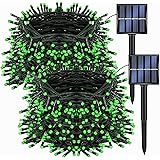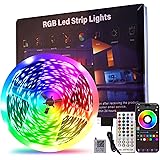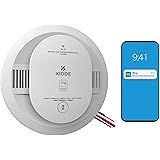As highlighted in the accompanying video by Mark Locker, a significant difference in performance exists between traditional incandescent bulbs and their fluorescent counterparts. Specifically, it is often noted that fluorescent bulbs are approximately 75% more efficient than incandescent bulbs of equivalent wattage or luminous output. Furthermore, their operational lifespan can extend up to eight to twelve times longer than that of a standard incandescent bulb. This substantial disparity in efficiency and longevity is not merely anecdotal; rather, it is rooted in fundamental differences in how these lighting technologies produce light.
Understanding Why Fluorescent Bulbs Are More Efficient
The core reason why fluorescent lights are more efficient lies in their method of light generation. While incandescent bulbs rely on a process that inherently wastes a significant amount of energy as heat, fluorescent lighting employs a more direct approach to visible light production. This distinction becomes clear when the internal mechanisms of each bulb type are examined.
The Incandescent Method: Heat-Based Light Production
In a standard incandescent bulb, light is produced through incandescence, a process where a material is heated to a high temperature until it glows. A thin wire filament, typically made of tungsten, is enclosed within a glass bulb, often filled with an inert gas like argon or nitrogen. An electrical current is passed through this filament, causing it to heat up intensely due to electrical resistance. As the filament’s temperature rises, it emits light, along with a considerable amount of heat.
It is estimated that, for an incandescent bulb, only about 5-10% of the electrical energy consumed is converted into visible light. The overwhelming majority, often 90% or more, is dissipated as infrared radiation, commonly known as heat. This substantial energy loss as heat explains why incandescent bulbs become very hot to the touch and contribute to higher energy bills, especially when many such bulbs are used.
The Fluorescent Method: Gas Excitation and Phosphor Coating
Conversely, fluorescent bulbs operate on a different principle altogether. These bulbs consist of a glass tube coated on the inside with a material called phosphor. The tube is filled with a low-pressure gas, which typically includes mercury vapor and an inert gas like argon.
When electricity is applied, it energizes electrodes at each end of the tube, creating an electrical arc. This arc causes the mercury atoms within the gas to become excited. As these excited mercury atoms return to their normal energy state, they emit ultraviolet (UV) radiation. Crucially, this UV light is invisible to the human eye. Therefore, it is the phosphor coating on the inside of the bulb that converts this invisible UV radiation into visible light, a process known as fluorescence.
The Role of Ballasts in Fluorescent Lighting Efficiency
For fluorescent lighting systems to operate correctly and efficiently, a component known as a ballast is required. A ballast serves multiple critical functions: it provides the initial high voltage surge needed to strike the arc and ignite the gas, and it then regulates the current flow through the lamp. Without a ballast, the current would rapidly increase, causing the bulb to burn out almost instantly.
Modern electronic ballasts, in particular, play a significant role in enhancing the efficiency of fluorescent lamps. These ballasts operate at high frequencies, which reduces flicker and improves the overall luminous efficacy of the bulb. The careful control of current ensures that the gas discharge is stable, leading to consistent light output and extended lamp life. This sophisticated control mechanism contributes directly to why fluorescent lights are more efficient.
Why Fluorescent Lights Last Longer
The extended lifespan of fluorescent bulbs, which can be eight to twelve times longer than incandescent bulbs, is another key advantage. This longevity is primarily attributable to the absence of a filament, which is the most vulnerable component in an incandescent bulb. Incandescent filaments are susceptible to burning out due to prolonged heat exposure and repeated heating and cooling cycles.
Fluorescent bulbs, on the other hand, produce light through a gas discharge, not a fragile filament that is prone to breaking. While their electrodes can degrade over time, the overall mechanism is far more resilient to the stresses that cause incandescent bulbs to fail. This durability means fewer replacements are needed, which translates to both convenience and further cost savings over time.
Beyond Basic Efficiency: Broader Benefits of Fluorescent Technology
The efficiency of fluorescent lighting extends beyond just lower energy consumption. Because less energy is converted into heat, fluorescent bulbs operate at much cooler temperatures. This reduction in heat emission can indirectly lead to additional energy savings, particularly in air-conditioned environments, as less cooling is required to counteract the heat produced by lighting.
Furthermore, fluorescent lamps offer greater flexibility in terms of light output and color temperature. They are manufactured in various shapes, including linear tubes (commonly seen in commercial buildings and kitchens) and compact fluorescent lamps (CFLs), which were designed to fit into standard incandescent sockets. Different phosphor blends can also be used to produce a range of “white” light, from warm yellowish tones to cool blue-white light, allowing for more tailored lighting solutions.
While newer lighting technologies like LEDs have emerged and offer even greater efficiency in many applications, understanding the foundational efficiency of fluorescent lights compared to incandescent remains crucial. The principles behind why fluorescent bulbs are more efficient highlight the advancements made in lighting technology to reduce energy waste and provide longer-lasting illumination.










